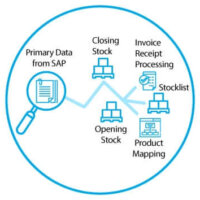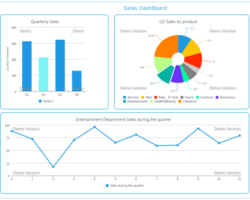
In a typical supply chain, three stakeholders should be involved before the product reaches the end consumer.
- First of all, the Manufacturing Company/National supplier
- The second one is the Distributor
- The third one is the Retailer
Sales transactions at each level are given different titles: Primary, Secondary and Tertiary Sales.
Primary Sales:
Primary sales happen when the Manufacturer sells goods to distributors. This is the first and primary movement of goods.
Here the goods move from the manufacturer’s warehouse to the distributor’s warehouse. The billing happens to the distributor who is the primary sale point.
Primary sales contribute to the revenue and the profits of the company. Primary sales are the main focus of the company.
Example of Primary sales – HUL and P&G have a lot of top-level distributors who pick the material in huge bulk. The primary sales, in this case, happen from HUL to the distributor.

Secondary Sales:
When the distributor sells goods to the retailer, secondary sales happen. In this transaction, the distributor keeps its margin and invoices the product at the dealer price (also called retailer price).
Secondary sales depend on the popularity and brand equity of the company. The aggressiveness of the distributor/retailer plays a major role in secondary sales. For a manufacturer, secondary sales are more important than primary sales because if the secondary sale does not happen, then the primary sales will not happen.
Tertiary Sales:
Tertiary sales are the final level of sales observed in a company. This happens when the retailer sells the product to the final consumer.
The product at this level is sold at either of MRP (Maximum Retail Price) or MOP (Market Operating Price).
Tertiary sales are observed only in cases where there are three tier distributions. For example – If the company has a distributor who is selling to a retailer who in turn sells to the consumer.
Tophawks provides end to end outsourced sales network setup service to its clients.
